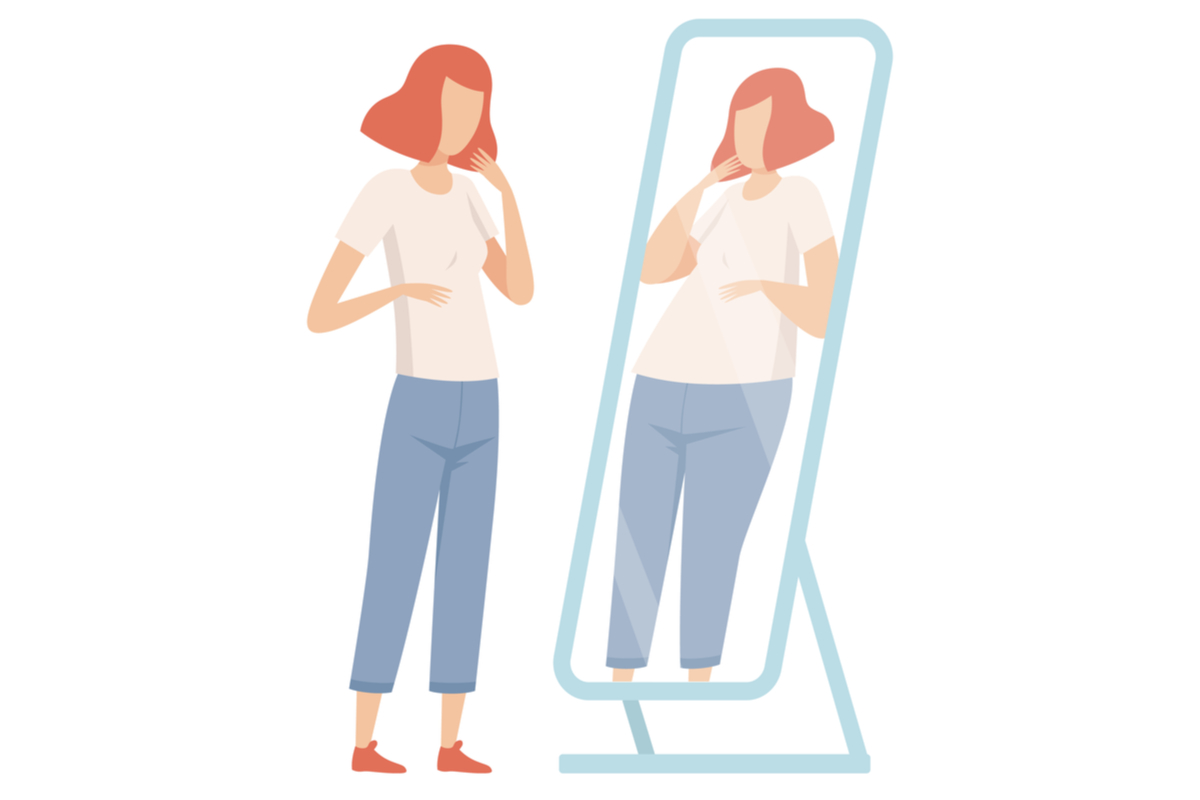Body dysmorphia, which is also called body dysmorphic disorder, is an anxiety-related psychiatric condition that is characterized by an intrusive and persistent pre-occupation with an imagined or unnoticeable flaw in appearance. It is estimated that body dysmorphic disorder affects 1 in every 50 people and can occur at any age.
People with body dysmorphia tend to obsess over their appearance, often resorting to repetitive grooming behavior (e.g. checking oneself in the mirror more often than usual) and the constant need for reassurance. This condition could significantly affect a person’s functioning and could bring about intense stress and anxiety if not addressed.
Causes of body dysmorphic disorder
Researchers have yet to discover the exact cause leading to the development of body dysmorphia. However, a wide array of empirical studies suggest that the development of such condition could be influenced by both genetic and environmental factors.
Studies primarily show that individuals who have relatives with obsessive-compulsive disorder (OCD) or depression are more likely to develop body dysmorphia. Also, individuals suffering from other mental disorders are also prone to this condition. Twin studies show that genetics could account for 42-44% of the variation in body dysmorphia symptoms.
Brain and neural differences could also cause body dysmorphia. Recent findings show that the development of body dysmorphic disorder is significantly related to the release of neurotransmitters, particularly serotonin. A lack of ample serotonin causes depressive symptoms, which has led to newer modes of treating body dysmorphia to primarily focus on serotonin regulation.
Environmental factors are also considered as significant contributors in the development of body dysmorphia. Studies show that cultural factors, traumatic experiences, and other significant life events could affect a person’s perception of his or her physical features. People who have been teased, bullied, and/or abused about their bodies during their younger years are more likely to develop body dysmorphic disorder.

Image Credit: NotionPic / Shutterstock.com
Diagnosing body dysmorphic disorder
The symptoms and diagnostic criteria for body dysmorphic disorder are stated in the latest edition of the Diagnostic and Statistical Manual of Mental Disorders (DSM-5). A person could be diagnosed with the condition if he or she meets the following criteria:
- Preoccupation with one or more perceived flaws in the physical appearance which are not easily observable by other people
- Performance of repetitive behaviors (e.g. mirror checking, excessive grooming, skin picking) in response to his or her appearance
- Engaging in mental activities (e.g. consistently comparing his or her appearance to others) in response to his or her appearance
Areas of comparison and concern among patients include the face, hair, skin, breast, and genitalia. People with body dysmorphic disorder usually experience clinically-significant distress in both social and occupational settings.
Treatment options
There are two primary methods for treating body dysmorphic disorder, which include serotonin reuptake inhibitors (SRIs) and cognitive behavioral therapy (CBT).
SRIs are a type of pharmacotherapeutic intervention that can be used in the treatment of body dysmorphia. Randomized clinical trials have been conducted to test the efficacy of the treatment approach. Although the results of these studies have revealed the benefit of a pharmacotherapeutic approach to body dismorphia, they also highlight the need for a more individualized treatment plan that is suitable for each patient’s particular diagnosis, severity, and needs.
The use of CBT for body dysmorphia as a psychotherapeutic technique focuses on reshaping the irrational and unhealthy thought process into a more adaptable one. CBT positively helps a patient overcoming his or her condition through the adaptation of appropriate strategies that alter both their cognitive and behavioral patterns. A complete course of CBT for body dysmorphia usually runs from 12 to 22 weeks, depending on the patient’s need and severity of the condition.
References
- American Psychiatric Association. (2013). Diagnostic and Statistical Manual of Mental Disorders (5th Ed.). Washington, DC.
- Body Dysmorphic Disorder (BDD). Retrieved from https://adaa.org/understanding-anxiety/related-illnesses/other-related-conditions/body-dysmorphic-disorder-bdd#.
- Body dysmorphic disorder (BDD). (2017). Retrieved from https://www.nhs.uk/conditions/body-dysmorphia/#causes-of-bdd.
- Body dysmorphic disorder. (2016). Retrieved from https://www.mayoclinic.org/diseases-conditions/body-dysmorphic-disorder/symptoms-causes/syc-20353938.
- Krebs, G., Fernández de la Cruz, L., & Mataix-Cols, D. (2017). Recent advances in understanding and managing body dysmorphic disorder. Evidence-Based Mental Health, 20, 71-75.
- Phillips, K. A. (2004). Body dysmorphic disorder: recognizing and treating imagined ugliness. World Psychiatry, 3(1), 12–17.
- Veale, D. (2004). Body dysmorphic disorder. Postgraduate Medical Journal, 80, 67-71.
Further Reading
Last Updated: Mar 6, 2023